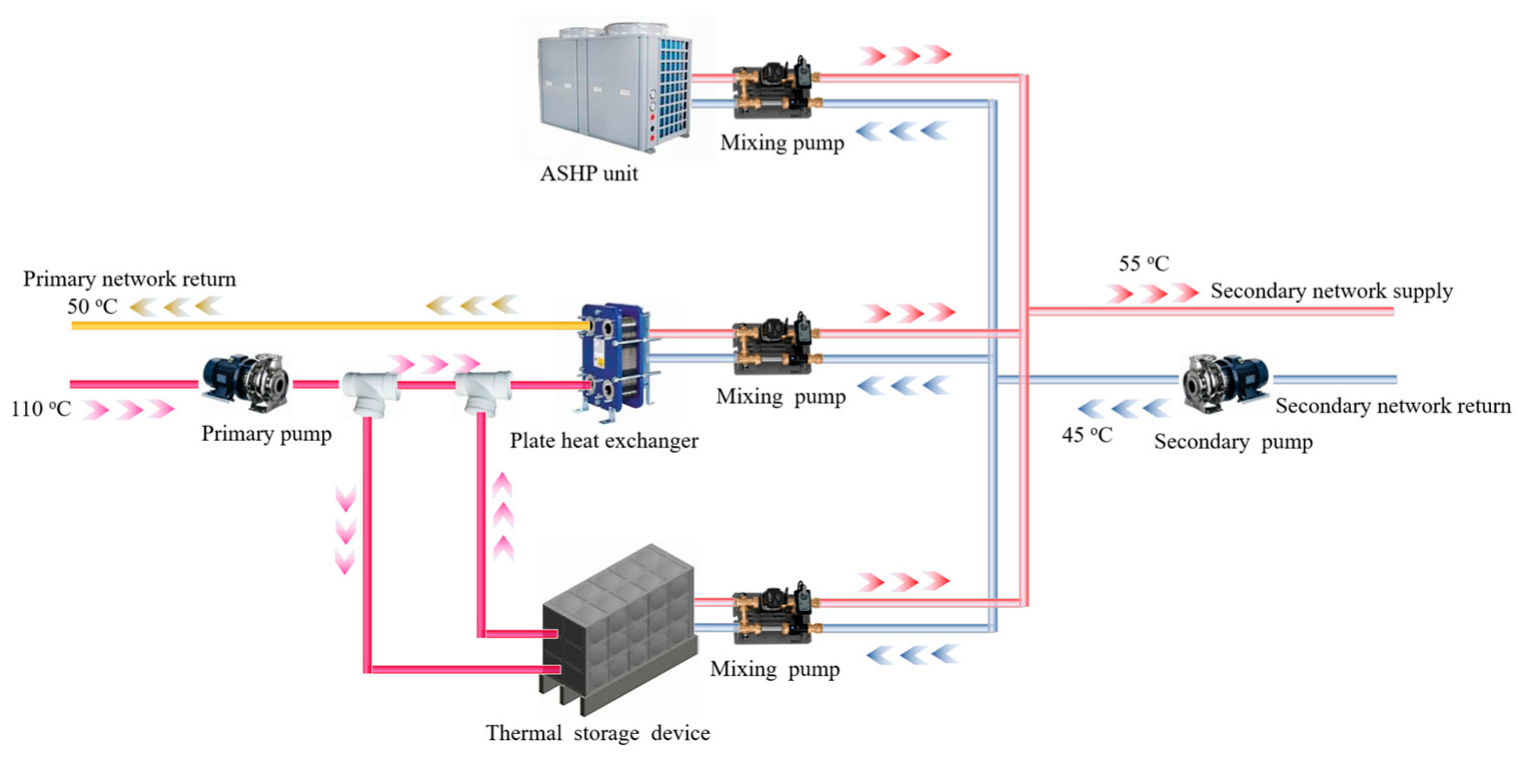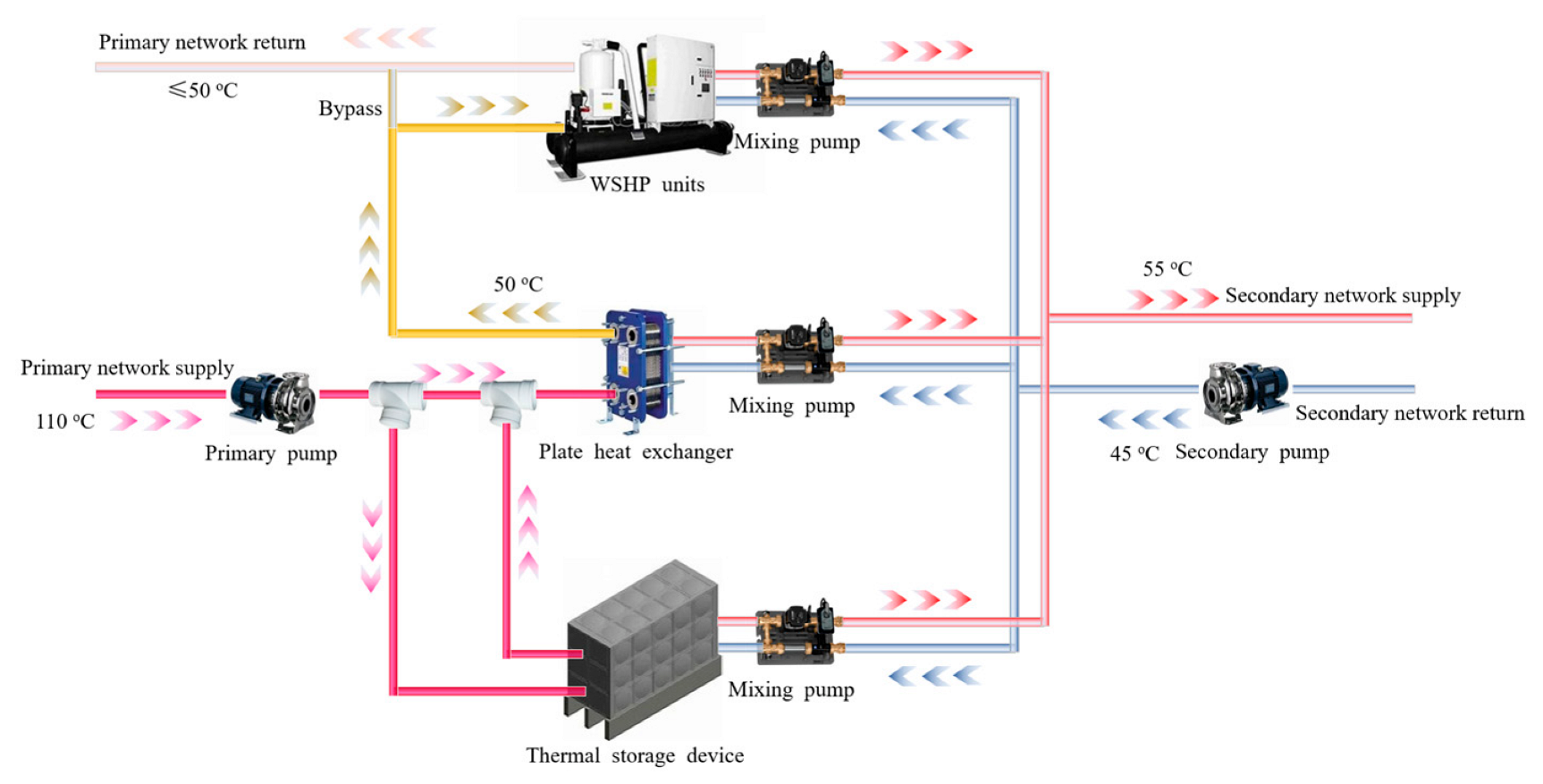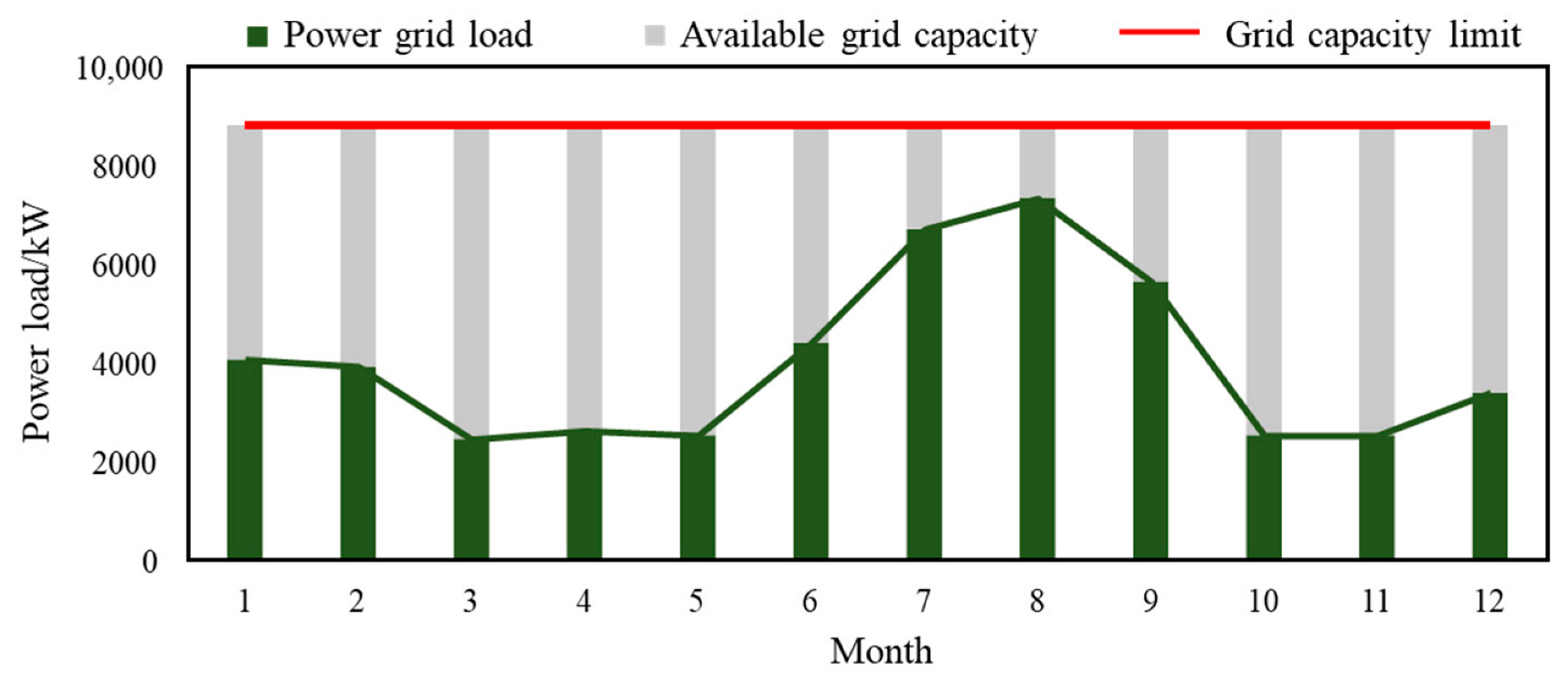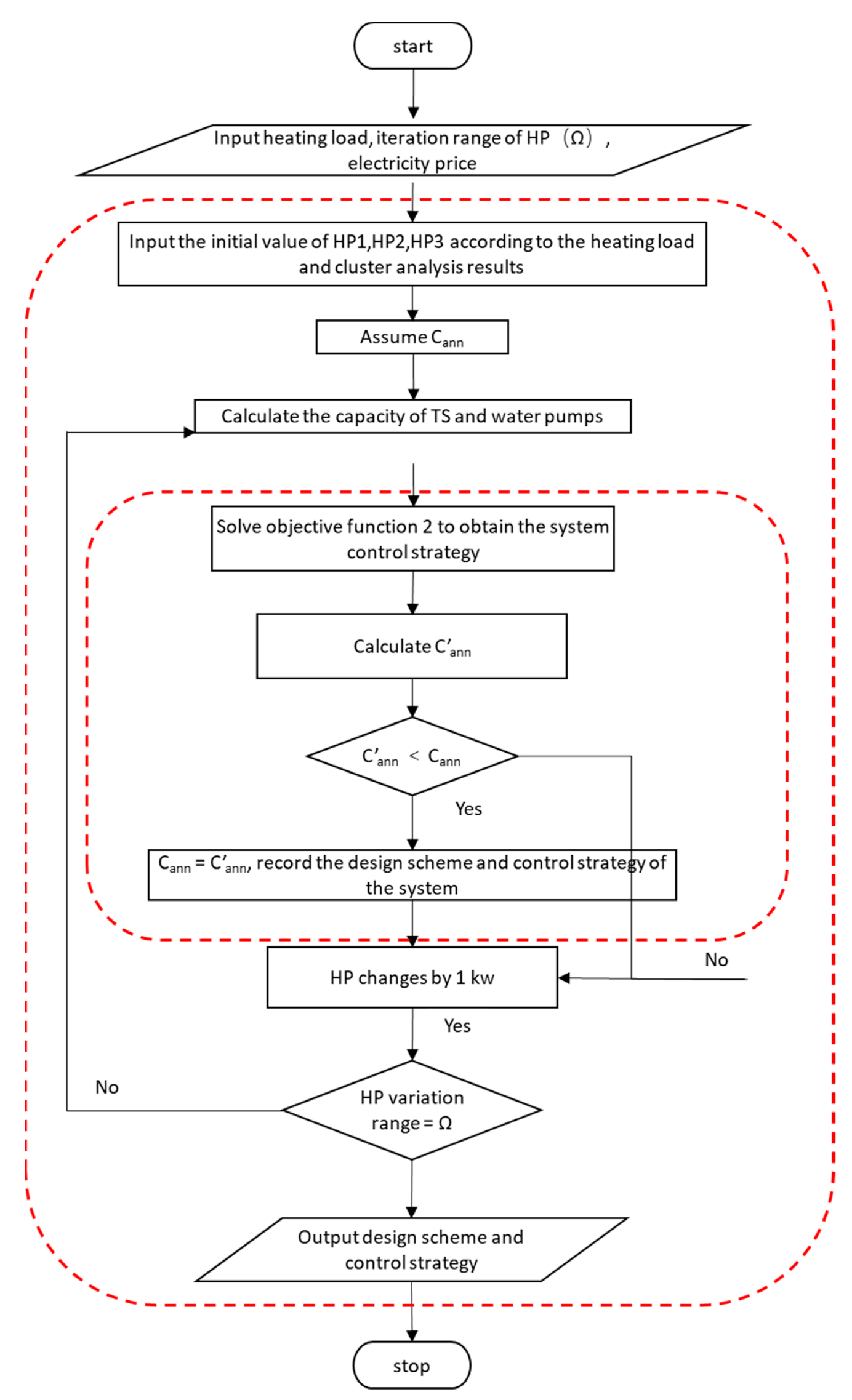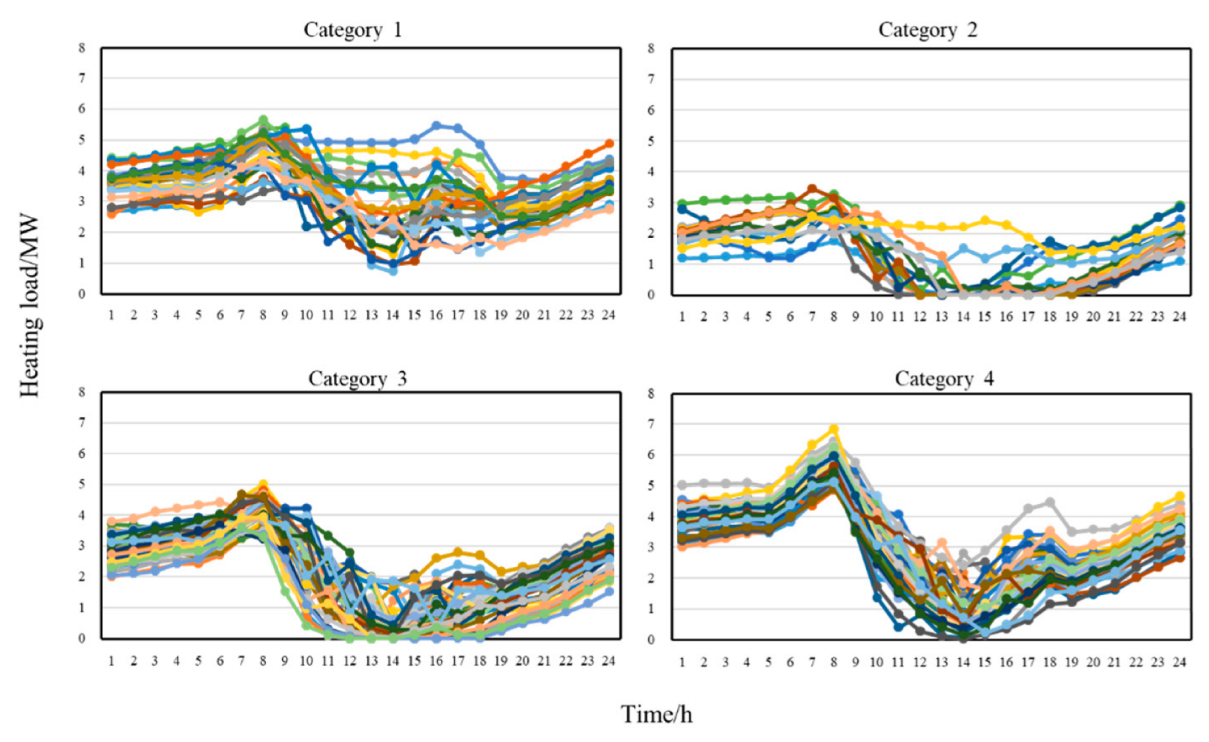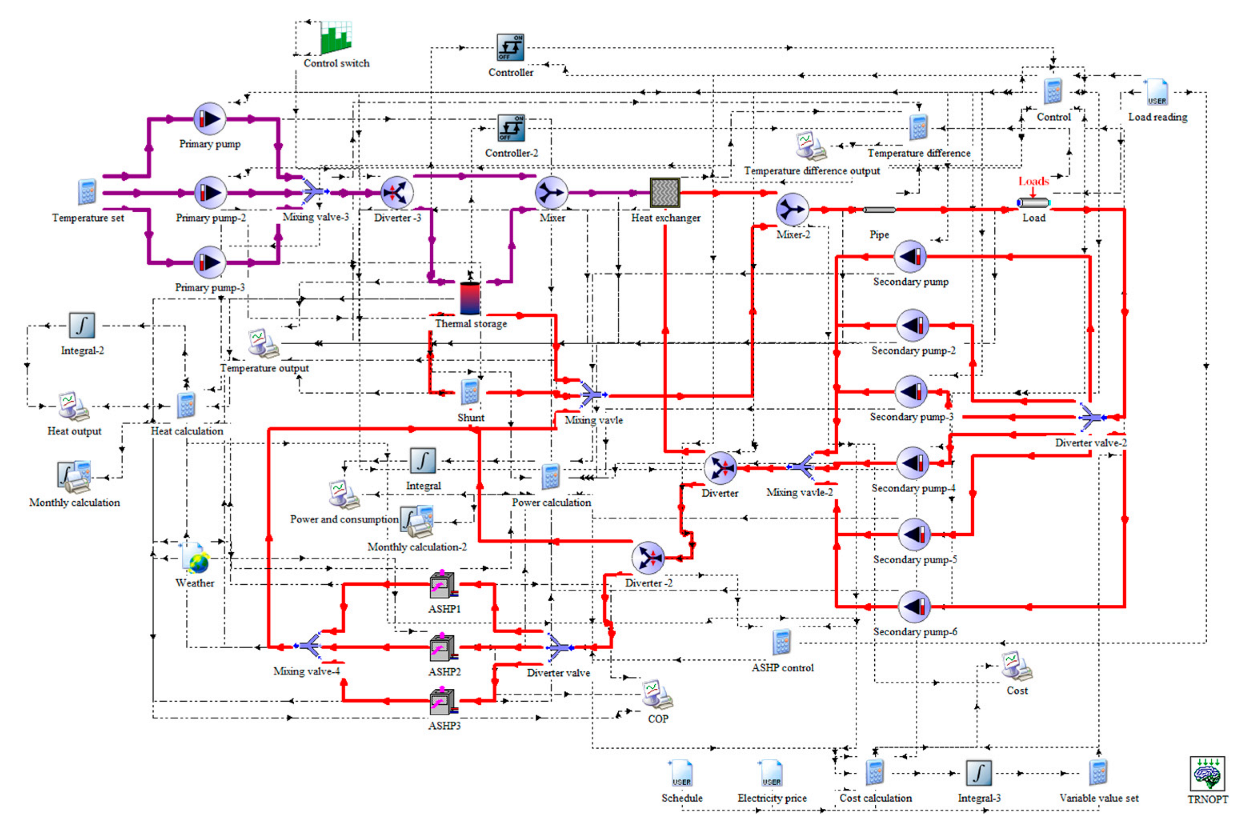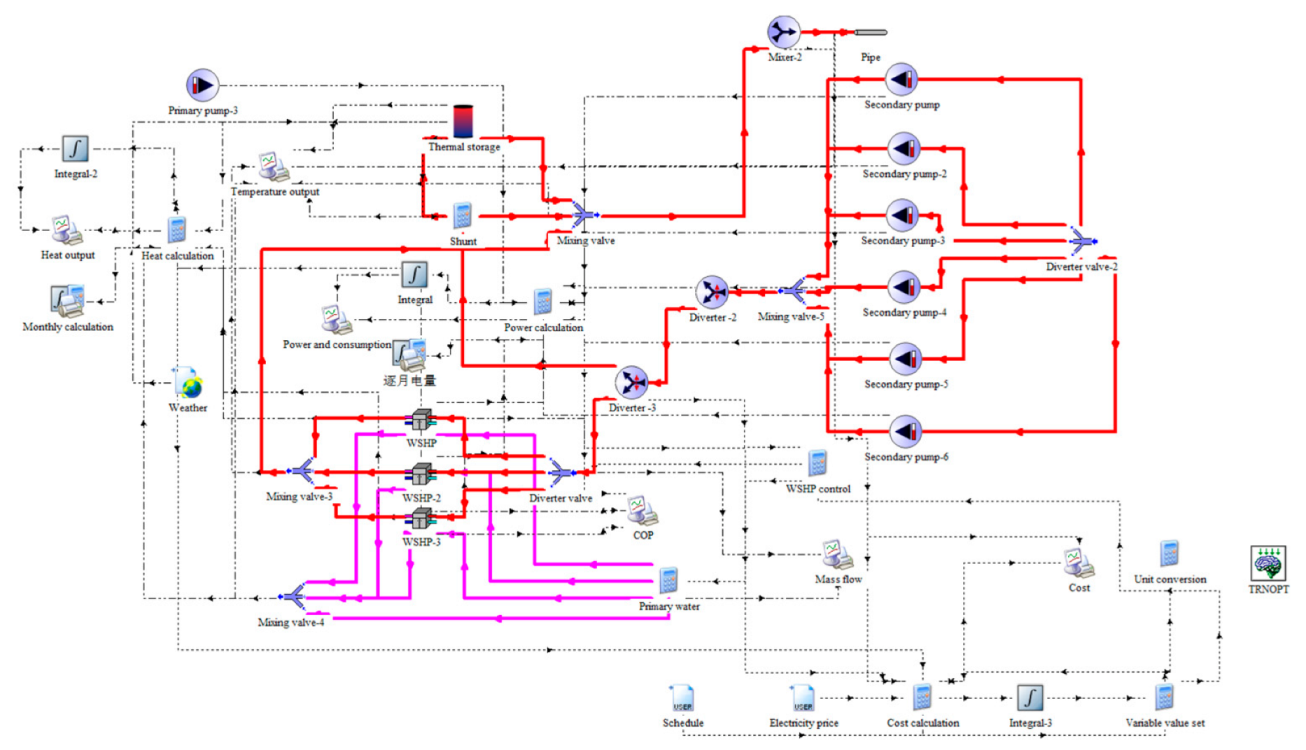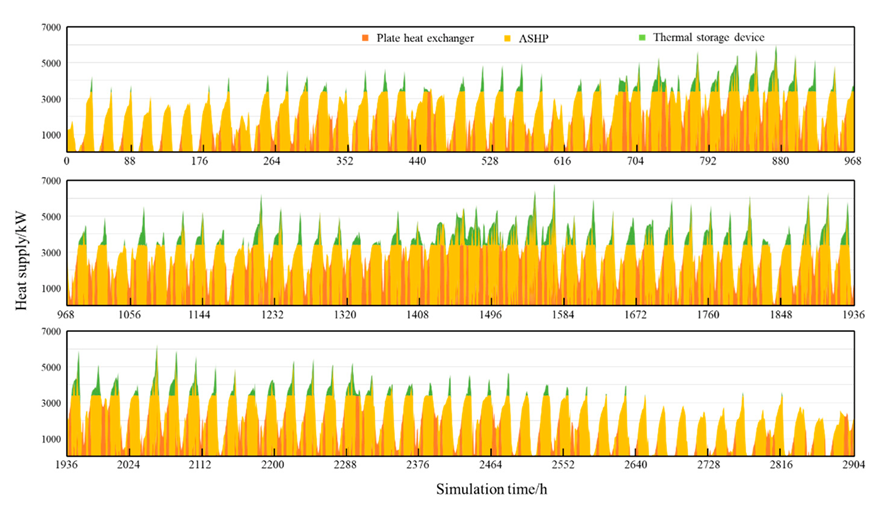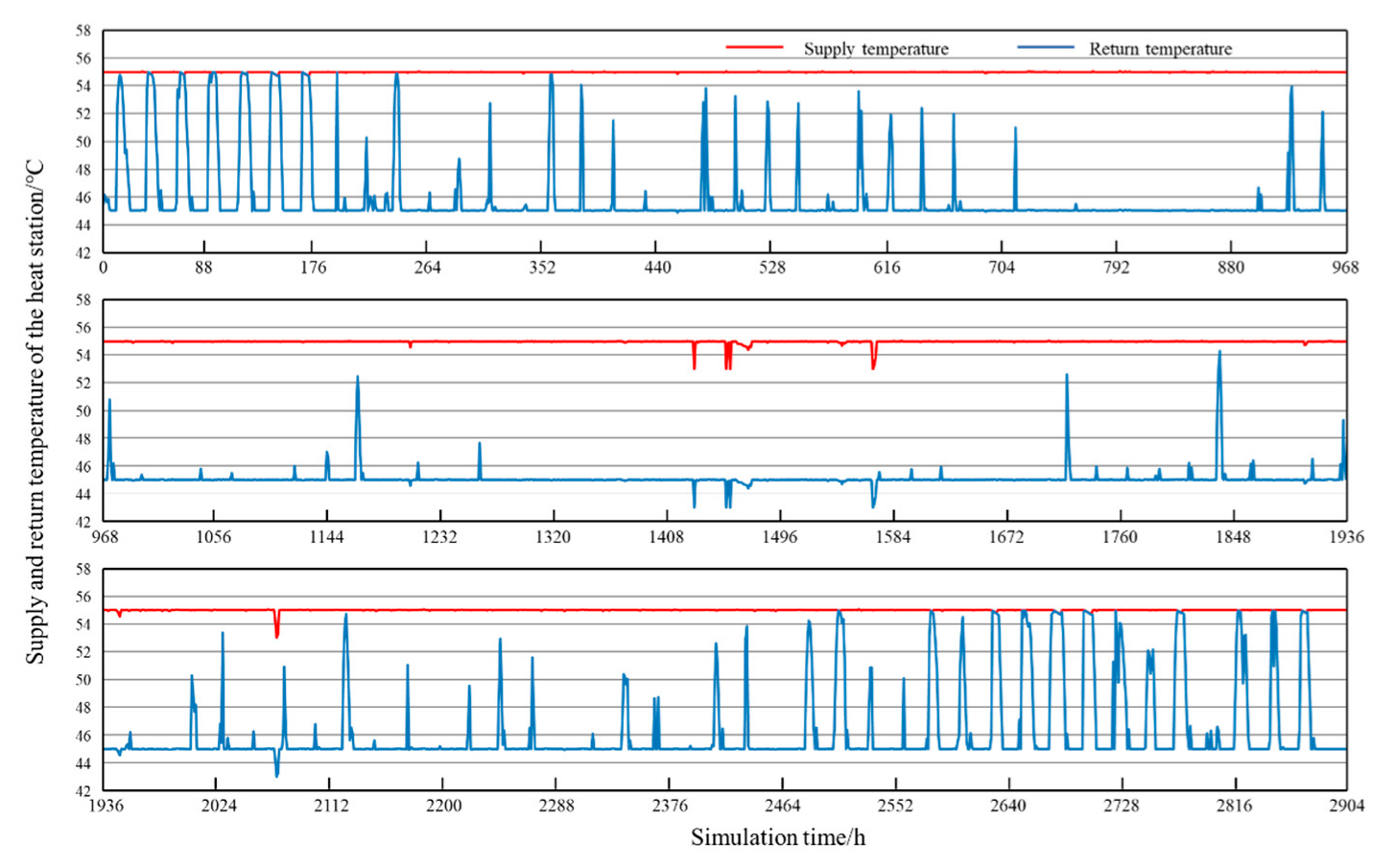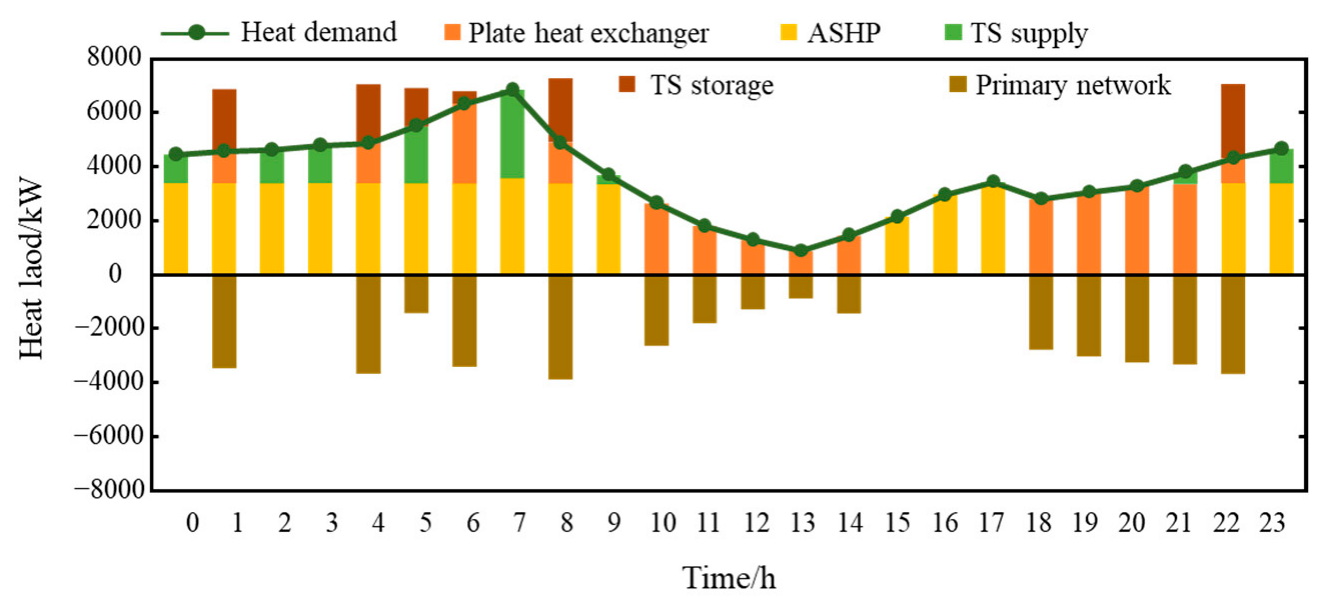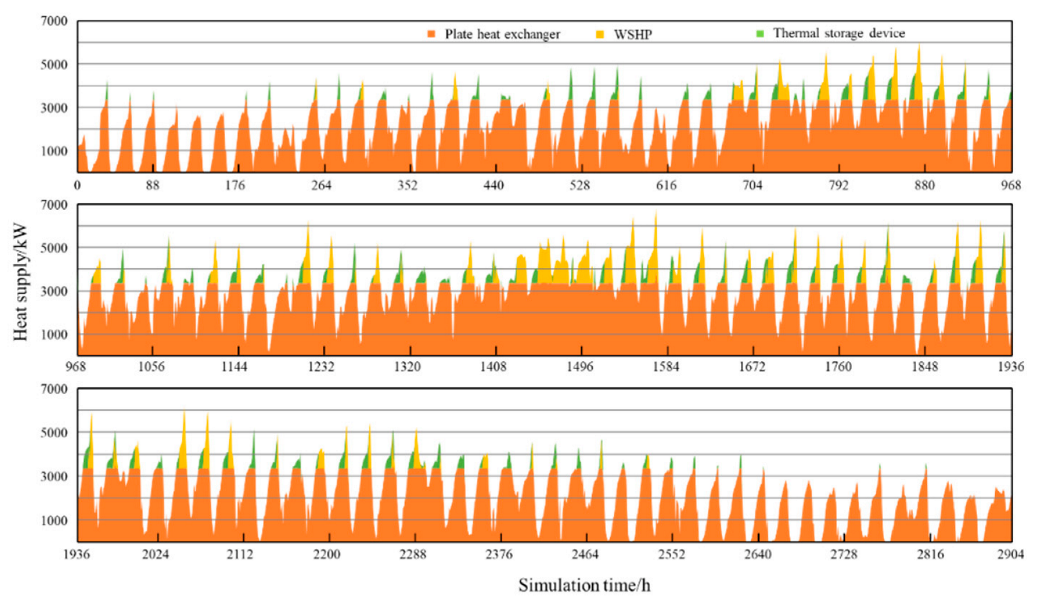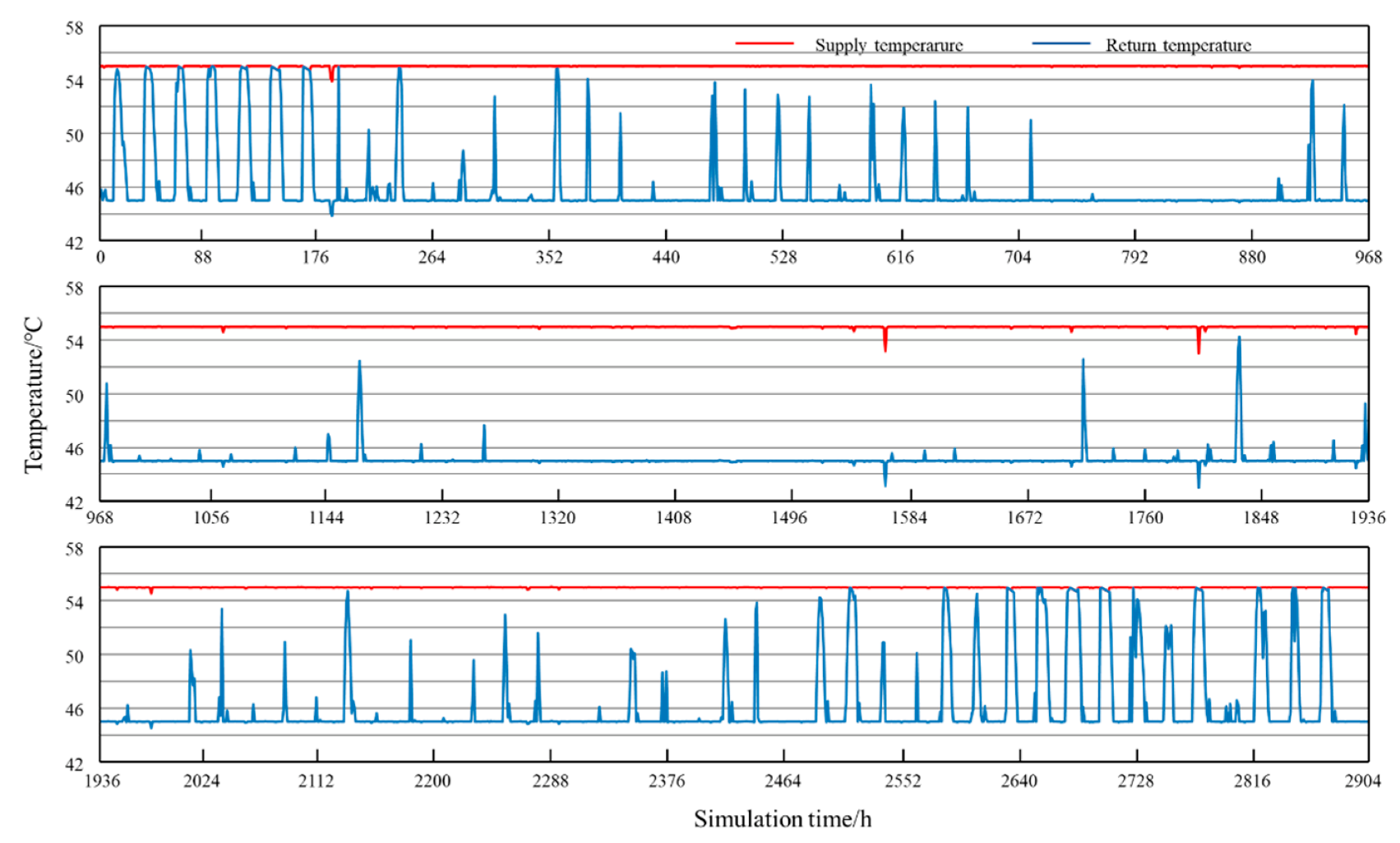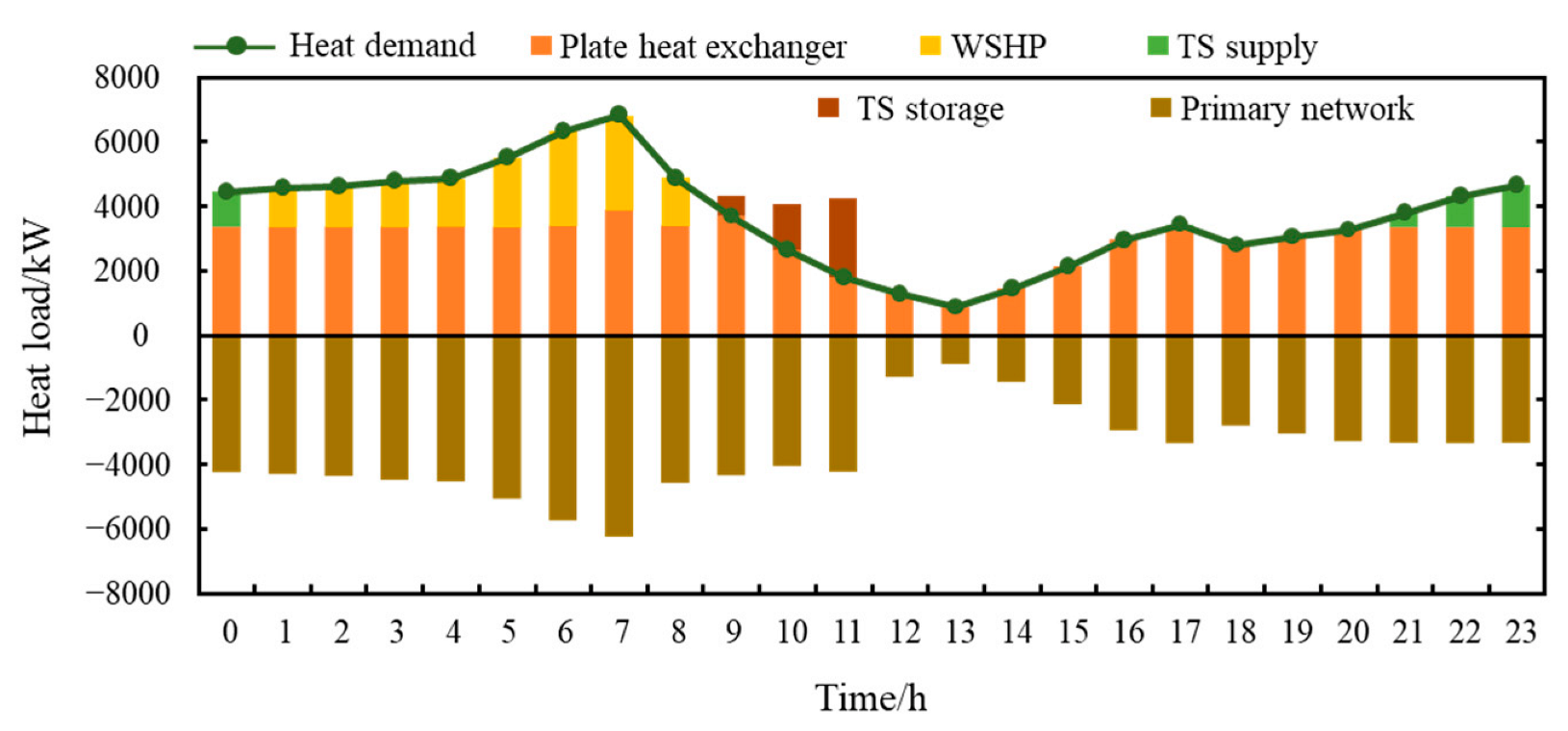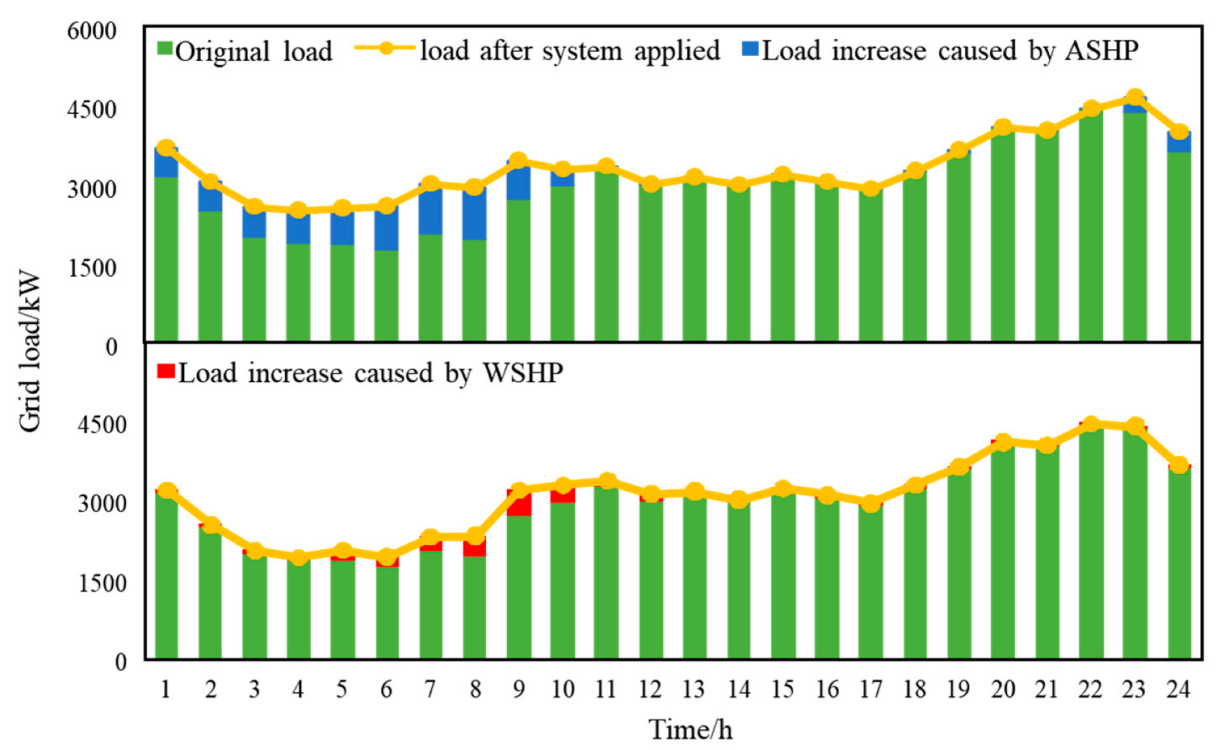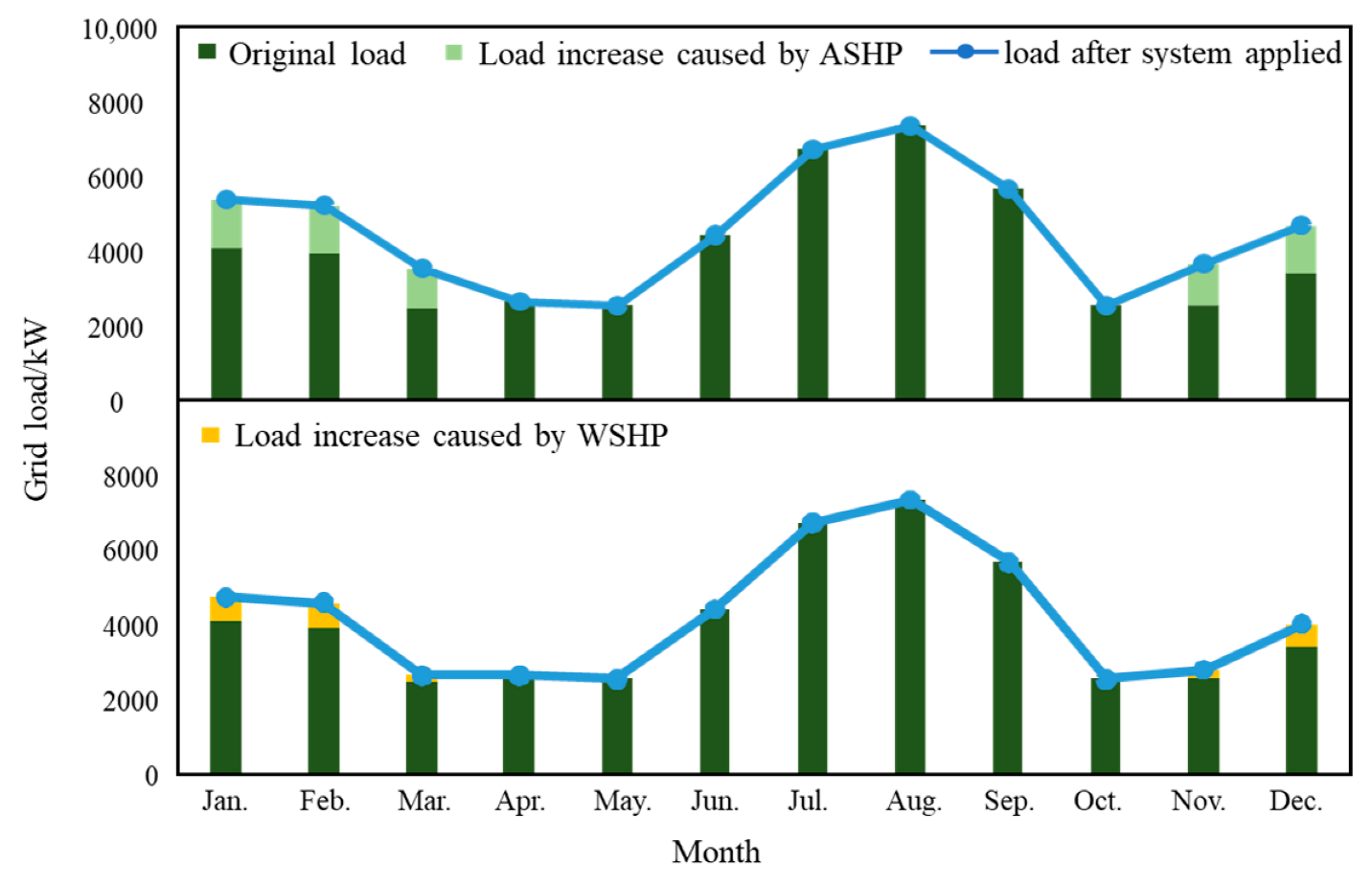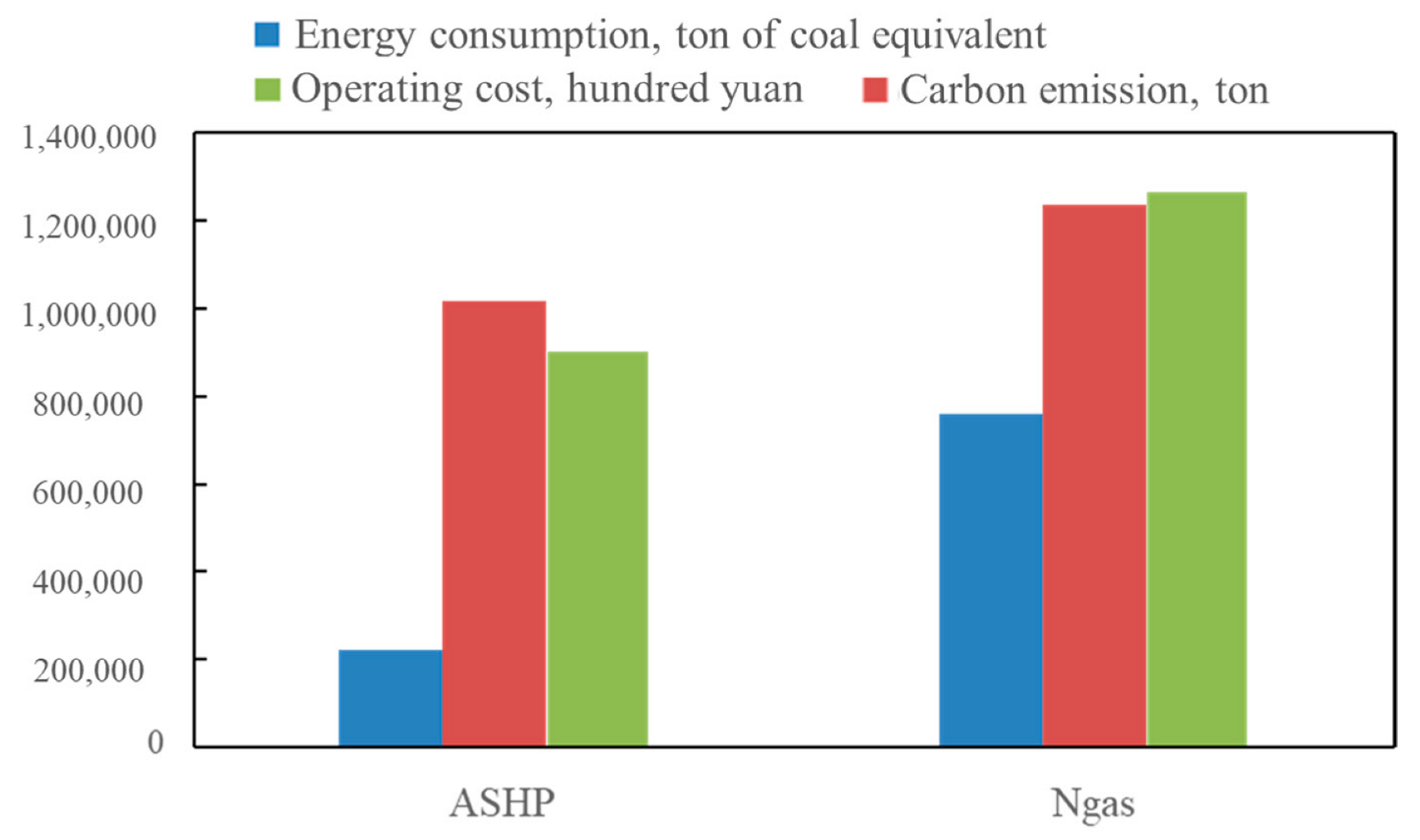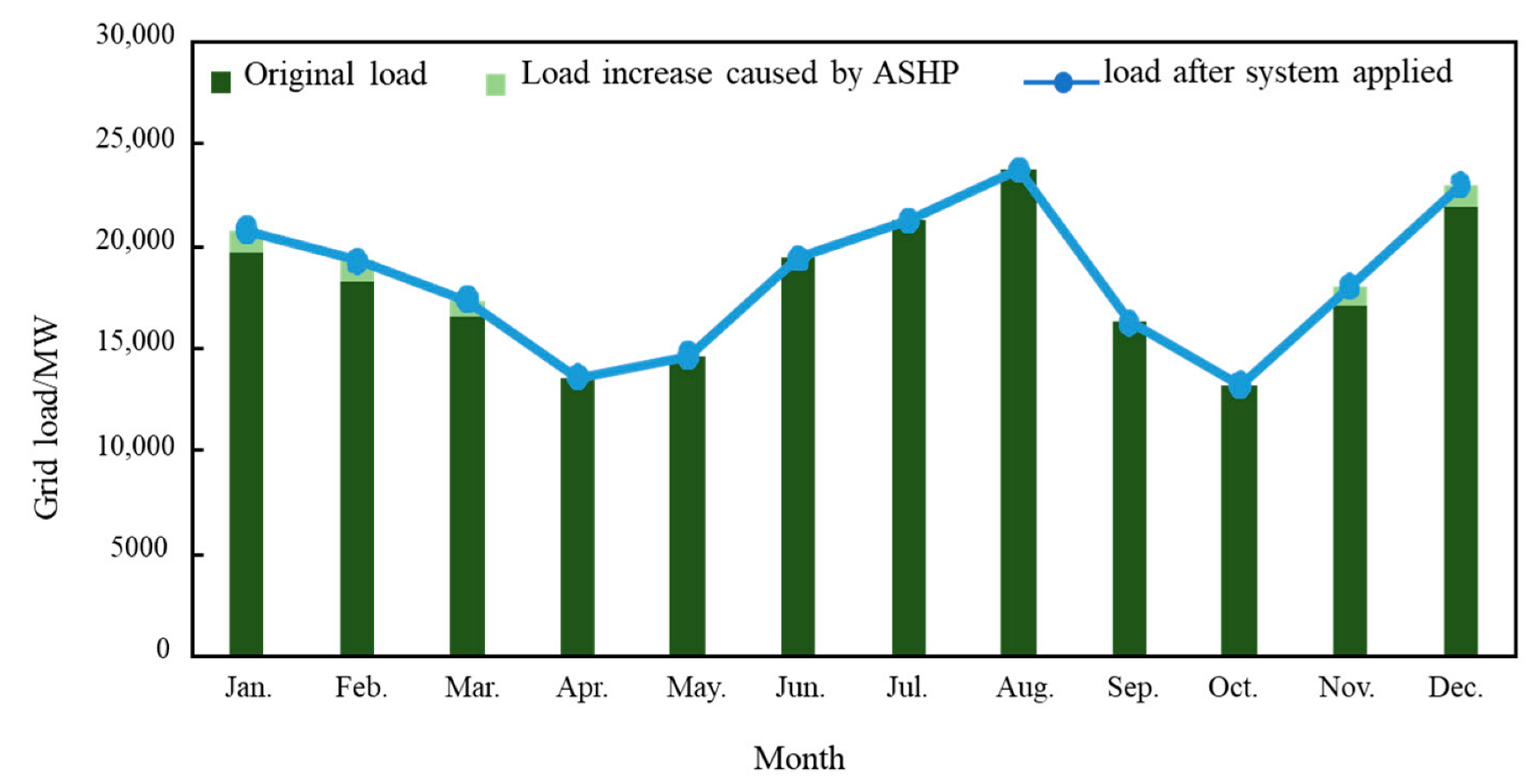1. Introduction
China has set a national political goal of achieving carbon peaking by 2030 and carbon neutrality by 2060, which involves reforms to reduce energy consumption and carbon emissions in all walks of life, including transportation, buildings, industry, and energy production [
1]. In building sector, the energy consumption of space heating accounts for 21% of building energy consumption [
2]. China has built the world’s largest district heating (DH) system with 426,000 km of networks by 2020, covering nearly all the cities in Northern China [
3], and the main heat sources are coal-fired boilers, gas-fired boilers, combined power and heat (CHP) plants, etc. In order to reduce the energy consumption and carbon emissions in the DH sector, the Chinese government has implemented many initiatives, such as shutting down coal-fired boilers and switching to electric heating and gas heating [
4]. Although these measures have led to a reduction in carbon emissions in the DH sector, they have also led to the shortage of heat sources, and meanwhile the ongoing urbanization has been drawing an increasing heating demand in China. Therefore, China’s DH system is facing a challenge of finding low-carbon, clean and efficient way to supplement its heat shortage. In Europe, Lund et al. [
5,
6,
7] proposed the concept of the 4th generation district heating (GDH) system, i.e., DH system with renewable energy, low-temperature water supply, and decarbonization. Jodeiri et al. [
2,
8] reviewed studies, achievements, technical aspects and challenges related to the DH system transition towards the 4th generation, and they found that heat pumps would play a crucial role in the integration of renewable energy sources and industrial waste heat into DH systems. Electric-driven heat pump (HP) is a device that can use renewable energy to produce heat. Therefore, integrating electric driven heat pumps into DH system is a feasible way to solve the problem of low-carbon heat source shortage and transform to the 4th GDH.
Ziemele et al. [
9,
10] proposed several technical pathways for the transition to the 4th GDH system, and their study proved that HPs would play an important role in the transition to achieve a balance between energy savings and investment costs. Averfalk et al. [
11] compared heat supply costs for a set of different heat supply sources at two pre-determined temperature levels and the results indicated that with decreasing distribution temperatures, the required installing capacity of HPs was reduced, and HPs were able to cover more of the total heat load. Lund et al. [
12] discussed fairness and effectiveness of the tariffs introduced by district heating supply companies with penalties for high return temperatures and benefits for low return temperatures, and some recommendations are given to improve the tariffs. Li et al. [
13] studied possibilities, bottlenecks and challenges of the transition process to the 4th GDH, and the potential of HPs in application of low-level heat sources, supply of domestic hot water and space heating was illustrated. Su et al. [
14] proposed a spatial system analysis method as a tool for heating-solution feasibility evaluation, and the findings proved that air source heat pumps for space heating had great potential in both south and north rural China. A lot of scholars have studied the economic potential of using HPs for DH. Bjarne Bach et al. [
15] analyzed the feasibility for the integration of large-scale HPs in the DH systems of Copenhagen by considering different heat sources and connections. Their study showed that the integration was profitable for the system and connecting HPs to the distribution network was more competitive than to the transmission network. Lund et al. [
16] studied the potential for introducing large-scale HPs into DH in Denmark and concluded that the application of HPs could bring great socioeconomic benefits of 100 million euros each year in 2025. Zhang et al. [
17] analyzed the economic performance of using HPs in the decarbonization of the heating sector in UK. They found that using only HPs was less cost-effective than integrating HPs with gas boilers, and DH system was the least economical way by taking infrastructure costs into consideration.
As more and more countries have put forward their national political goal of decarbonization, renewables are becoming a more important power source in the national grid [
18]. During the transition to the future power system, electric driven HPs may play an important role in realizing the flexibility of power grid [
19]. The potential of HPs to use renewable energy and reach lower carbon emissions has also been explored. Sun et al. [
20] studied a DH system integrated with industrial exhausted heat using electric driven HPs, and they concluded that HPs contributed to recovering waste heat, improving the thermal performance and financial benefit of the DH system. Blarke and Lund [
21] investigated the performance of large-scale HP units coupled with CHP plants in DH system. The results indicated that the integration of HPs with existing DH system might be the key to introduce a large number of renewables into the power grid and promote the integration of heating and power sector. In addition, many studies [
22,
23,
24,
25] have also proved that the introduction of HPs into energy systems is economically advantageous and can reduce carbon emissions.
Although numerous studies have shown that integrating HPs into DH system could bring economic benefits and contribute to carbon mitigation as well as the transition to the 4th GDH, most of the studies focused only on the national energy system and strategies in Europe, where the energy structure, population size and infrastructure situation is totally different from that of China. For China it is still quite a challenge to realize the 4th GDH transition with the existing large-scale DH network of nearly 426,000 km. The supply temperature of the primary network is usually more than 100 °C, which is clearly too high for the supply temperature of HPs. In addition, the coefficient of performance (COP) of HP will decrease significantly with the increase of supply temperature. In this case, it is more reasonable to integrate HPs into the secondary network in the DH substations. Song et al. [
26] proposed an absorption heat pump-based (AHP) system to integrate geothermal water into the secondary network in DH substations without decreasing supply temperature of the primary network. They used MATLAB [
27] to simulate the proposed system and the whole substation, and a real business center in Tianjin was taken as a case for further analysis. The results of their study indicated that using AHP in DH could save 8% of the annual cost and reduce 25.6% of carbon emissions. Shu et al. [
28] investigated the impact factors for energy saving of seawater source heat pump integrated DH system, and concluded that the energy saving would be directly impacted by the heating district radius and the design parameters of seawater source heat pump. However, the impact on the power grid caused by the application of electric driven HPs is often neglected, yet this would be critical to the integration of HPs into DH system.
Therefore, based on the idea of integrating HPs into the secondary network of DH systems, this study investigates the systematic retrofitting scheme of introducing air-source heat pump (ASHP) and water-source heat pump (WSHP), respectively, into DH substations to satisfy the increasing heating load demand. The performance of these two retrofitting schemes is studied and the potential of large-scale application of the proposed system is evaluated.
Section 2 gives the configuration and mathematical models of the system. The optimization model is also described in this chapter. In
Section 3 an onsite DH substation in Beijing is selected to study the performance of the proposed system and the results are presented and discussed in
Section 4. The conclusions are given in
Section 5.
